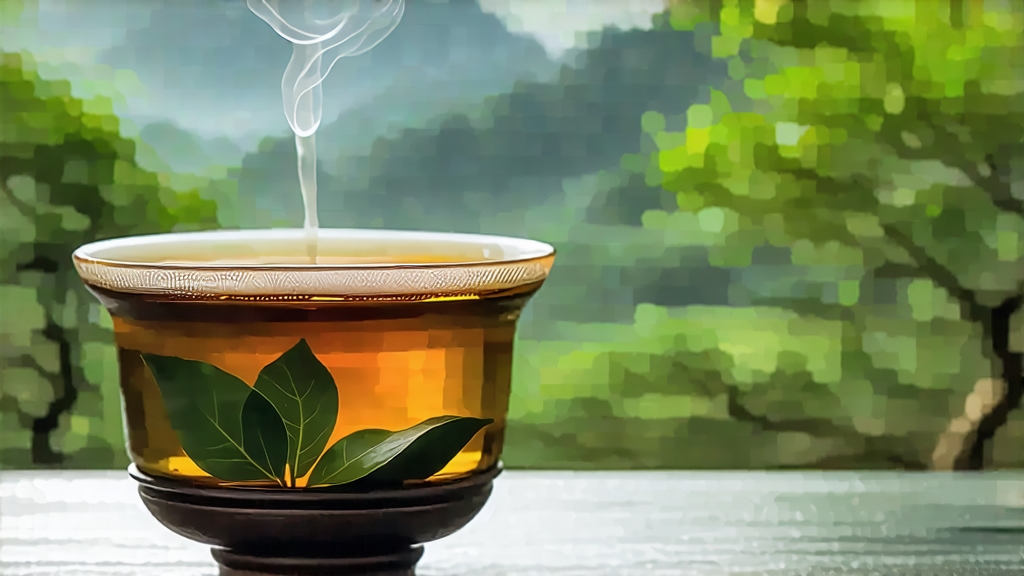
Tie Guan Yin, literally “Iron Goddess of Mercy,” is not merely an oolong; it is a moving chronicle of Chinese craftsmanship, Buddhist folklore, and terroir-driven taste that has seduced emperors, poets, and now, global tea aficionados. Grown in the granite-studded hills of Anxi County, southern Fujian, this tea carries the perfume of orchards after spring rain and the mineral memory of volcanic soil. To understand it is to witness how leaf, fire, and time conspire to create liquid jade.
History whispers that in the early eighteenth century a devout farmer named Wei Yin daily cleaned a neglected shrine to Guan Yin, the Bodhisattva of Compassion. One night the goddess appeared in a dream, guiding him to a hidden shrub whose leaves shimmered like iron yet smelled like blossoms. Wei cultivated the plant, named it in her honor, and shared cuttings with neighbors. Within decades Tie Guan Yin eclipsed Song-dynasty tribute teas, traveling on clipper ships to Southeast Asia and Europe, where Victorian merchants marketed it as “Bohea of the Iron Goddess.” Today Anxi produces roughly 25,000 tons annually, yet the finest lots remain micro-batch, often reserved before harvest by private collectors in Taipei, Singapore, or New York.
Botanically, Tie Guan Yin belongs to the Camellia sinensis var. sinensis “Hong Xin” or “Red Heart” strain, distinguished by crimson petioles and serrated leaves that taper like willow blades. The cultivar thrives at 600–1,000 m elevation where morning fog slows photosynthesis, concentrating amino acids and floral volatiles. Diurnal swings of 10 °C coax the leaf to store sugars, yielding the signature “yun gan”—a cooling, mentholated finish that lingers like chimes in still air.
Crafting Tie Guan Yin is choreography between farmer and weather. Picking begins at dawn when two leaves and a bud still hold dew; pluckers pinch rather than pull to keep cell walls intact. The leaf is then “wei diao”—sun-withered on bamboo trays for thirty minutes, turning every five to ensure even moisture loss. Indoor withering follows in climate-controlled rooms where the leaf is tossed on rush mats, bruising edges to initiate oxidation. This “yao qing” or rocking step is the soul of oolong: artisans rhythmically shake the leaves in wicker drums, coaxing enzymes to marry green freshness with red richness. When the leaf’s rim turns russet while the center stays emerald—roughly 30 % oxidation—fixation halts the process with a 220 °C tumble in gas-heated drums. Rolling comes next, first mechanically to break membranes, then by hand to twist leaves into the iconic dragonfly-head shape. A low-temperature bake at 80 °C for three hours reduces moisture to 5 %, yet the tea is not finished. Traditional “nong xiang” styles receive a second charcoal bake over lychee wood for sixty hours, imparting honeyed depth; modern “qing xiang” versions are baked briefly, preserving bright gardenia notes. Months of rest allow residual heat to dissipate, letting the leaf’s aroma integrate—much like wine aging sur lie.
Classification within Tie Guan Yin is a spectrum of scent, roast, and season. “Qing Xiang” (Light Aroma) is pale jade in cup, tasting of snap pea and white peach, best consumed within six months for vivacity. “Nong Xiang” (Heavy Aroma) steeps to antique gold, layering caramel, toasted almond, and wet slate—ideal for those who cherish Wuyi rock oolong but crave floral lift. “Chen Xiang” (Aged Aroma) is pressed into paper-wrapped bricks and cellared for decades; over time linalool degrades into soothing coumarin, yielding a dark, medicine-sweet liquor prized in Chaozhou as a digestif. Seasonal flushes matter: spring tea is delicate and mineral; autumn tea, harvested during the “October window,” possesses heightened orchid fragrance and is often called “autumn fragrance” by traders.
Water is the silent ingredient. Tie Guan Yin demands soft, neutral water with 50–80 ppm TDS; high calcium mutes florals while distilled water renders the liquor flat. Pre-heat a 120 ml white porcelain gaiwan with 95 °C water, then fill one-third with leaf—about 5 g. The first 15-second “wash” awakens the leaf and is discarded